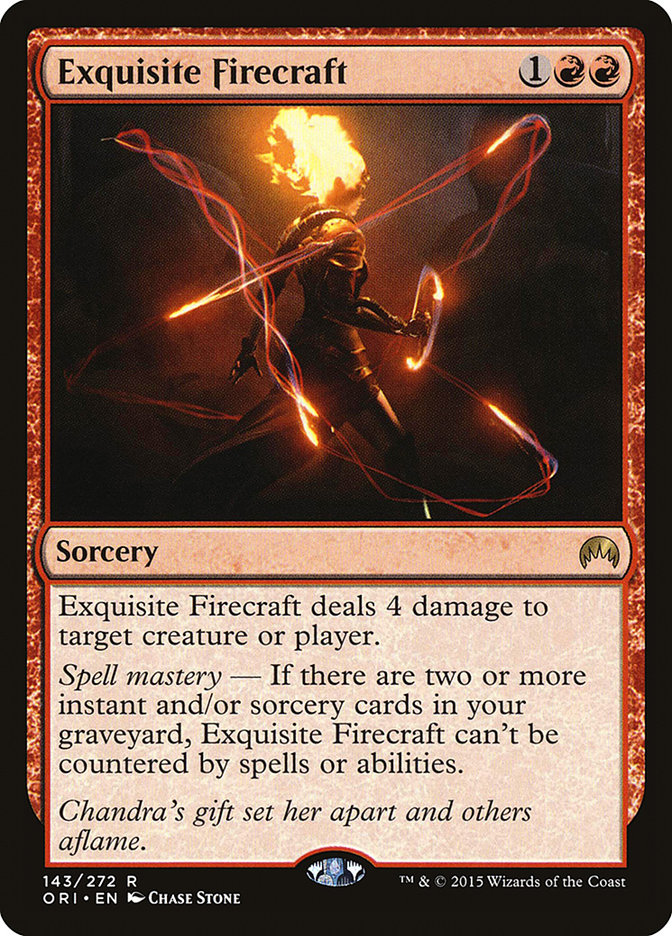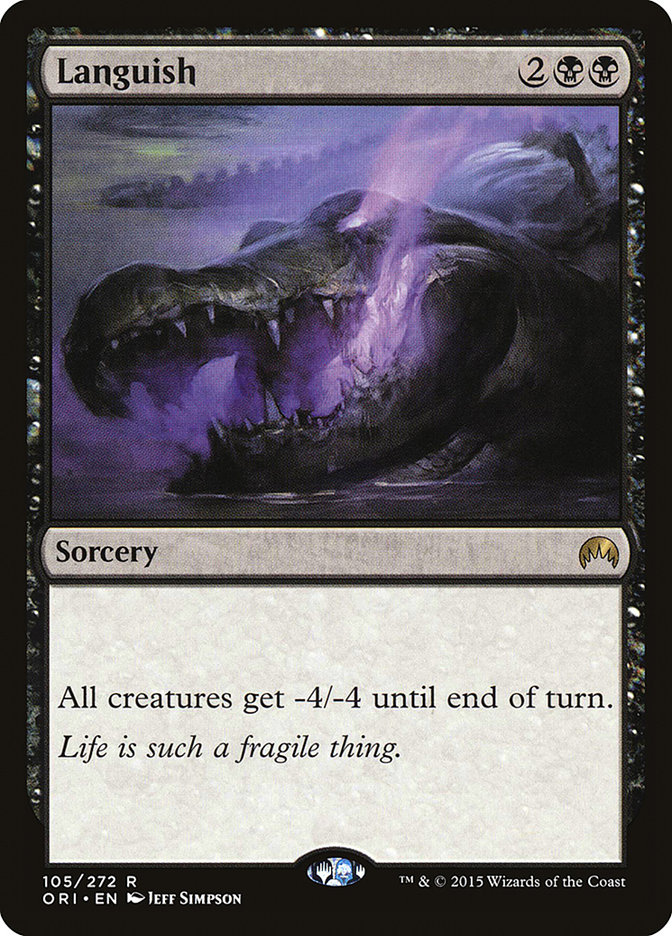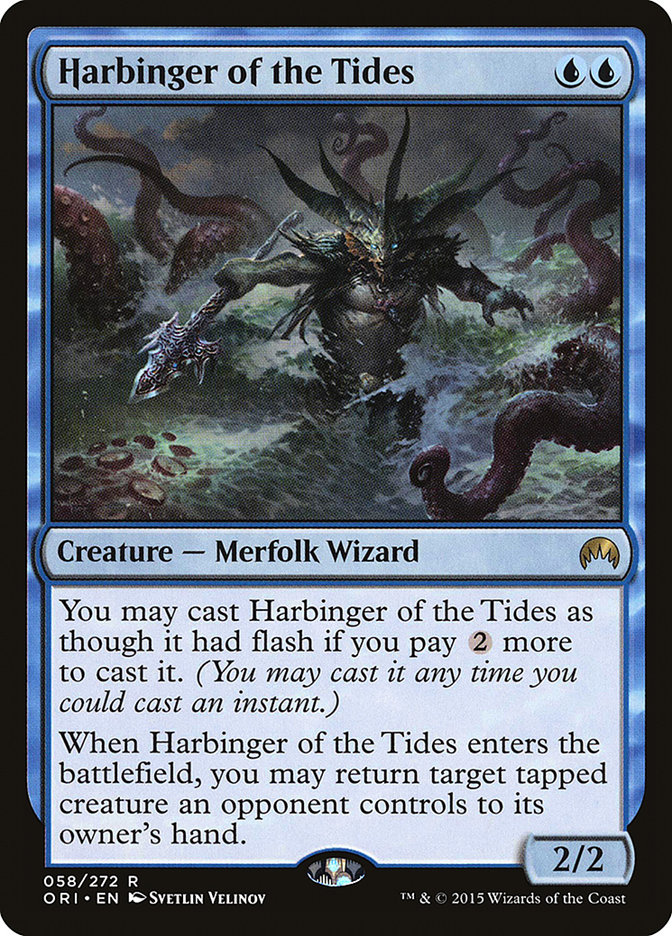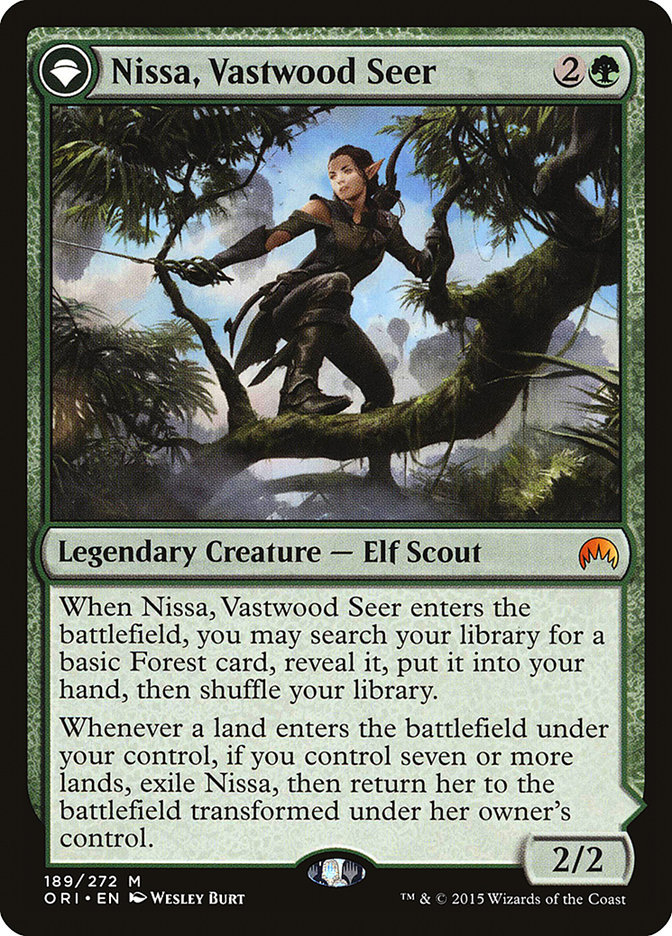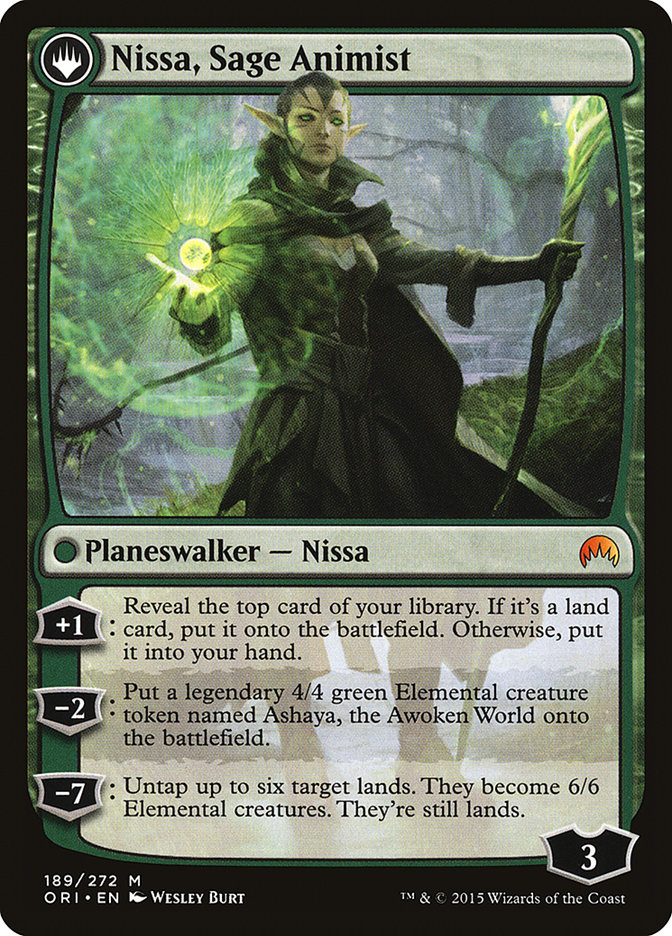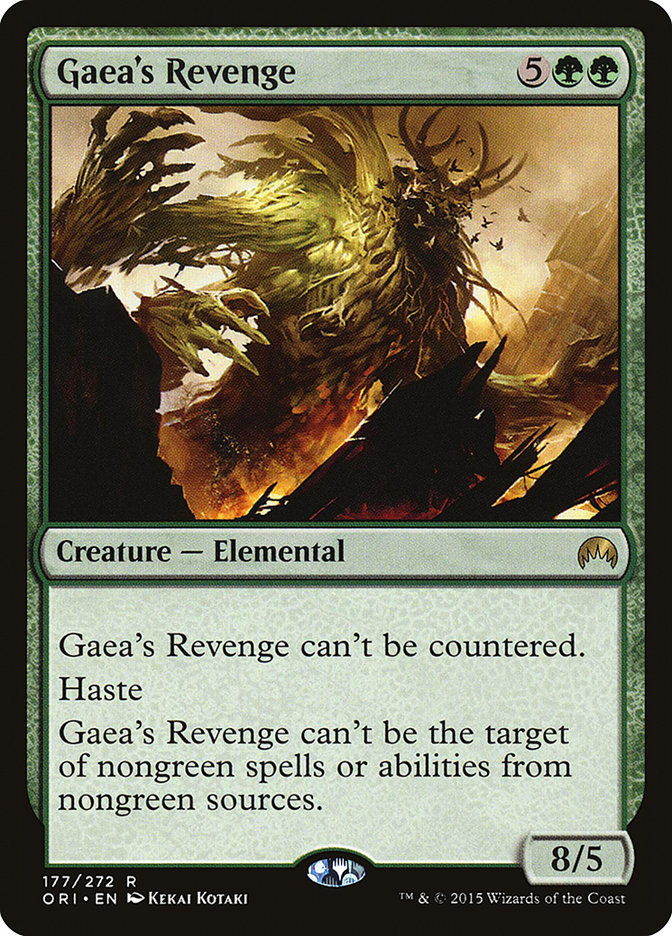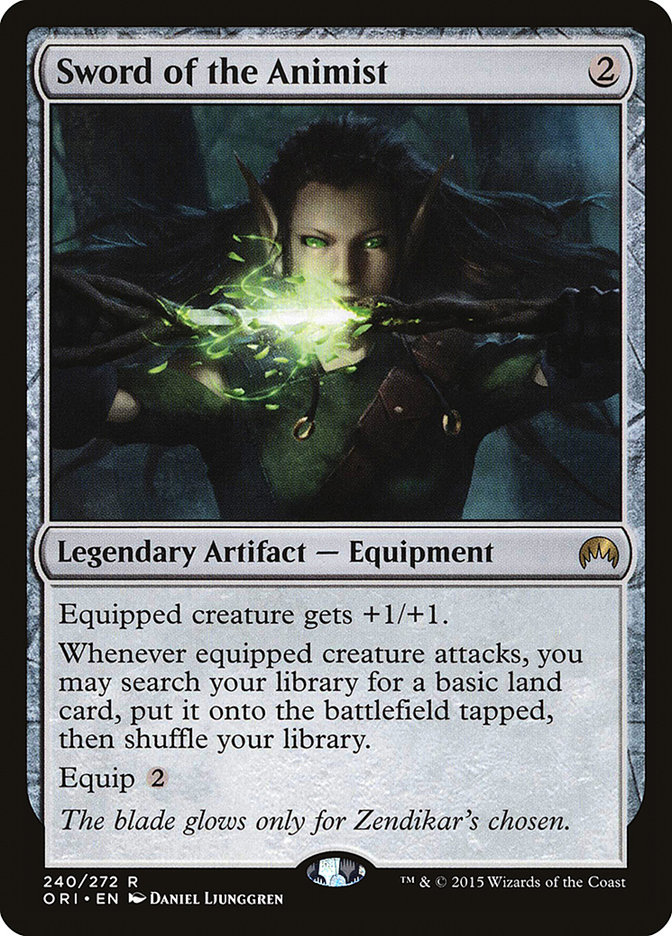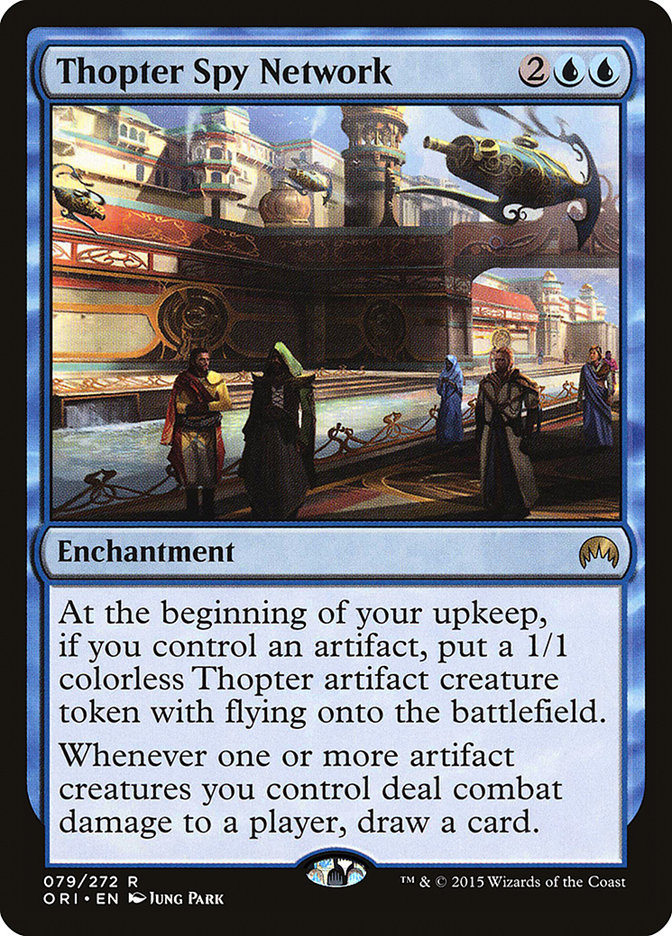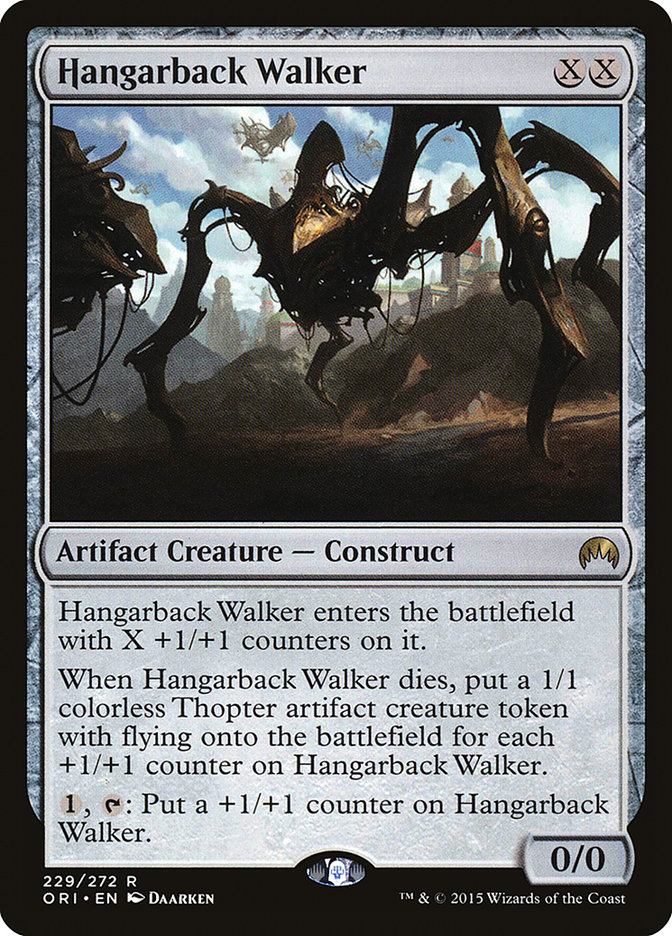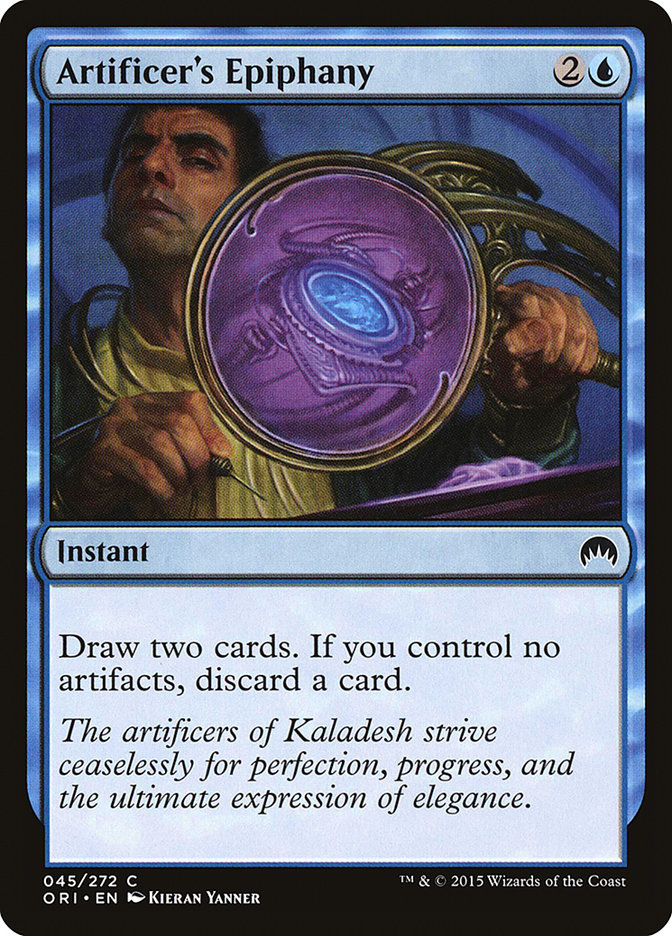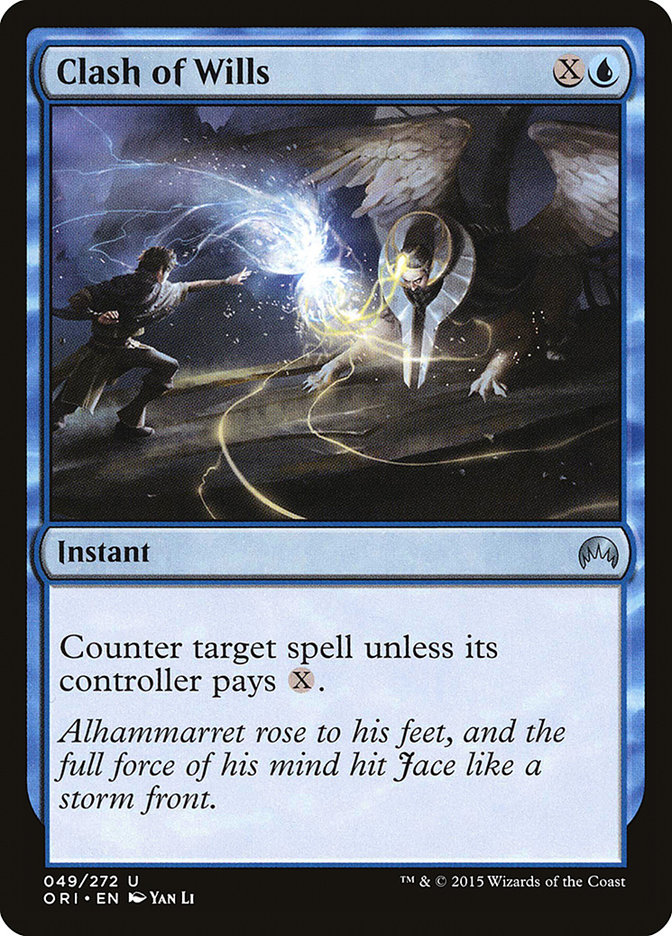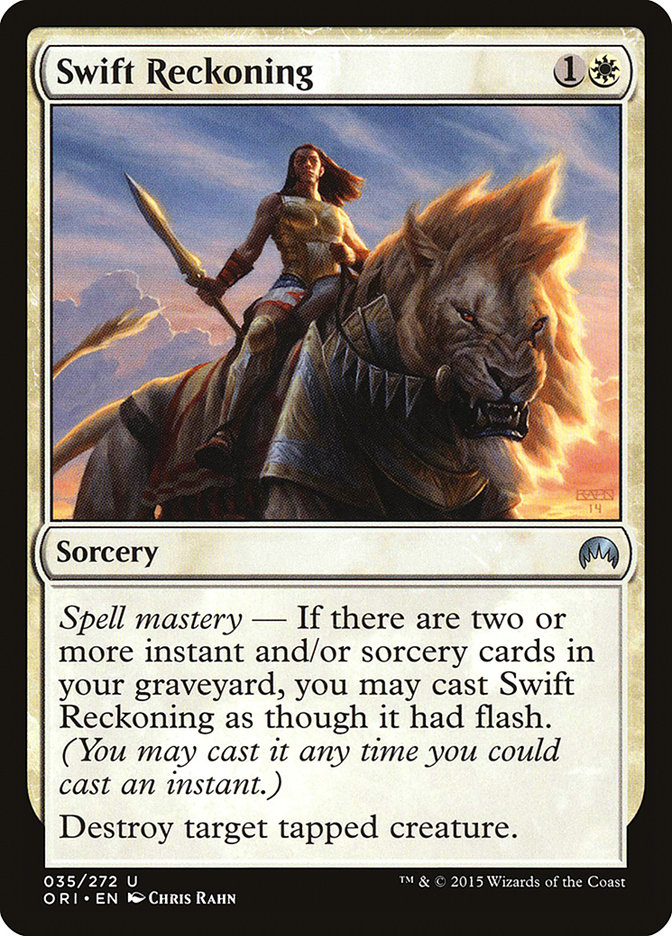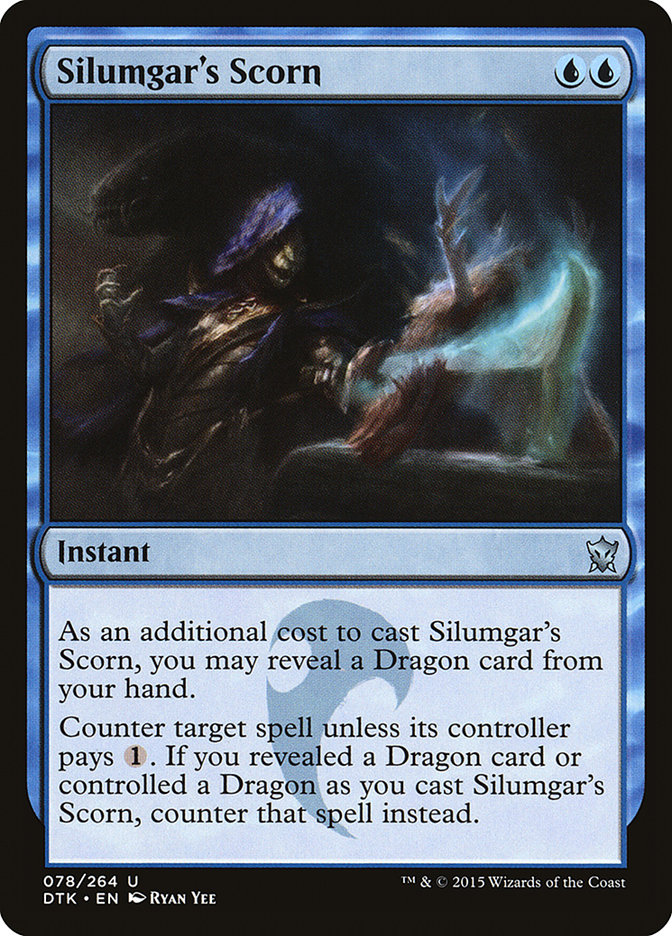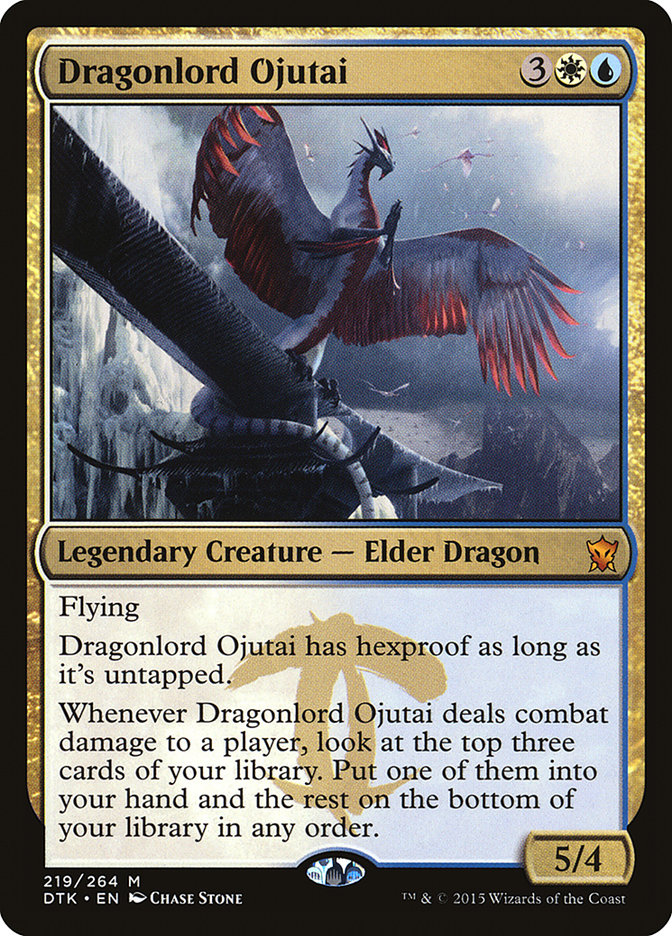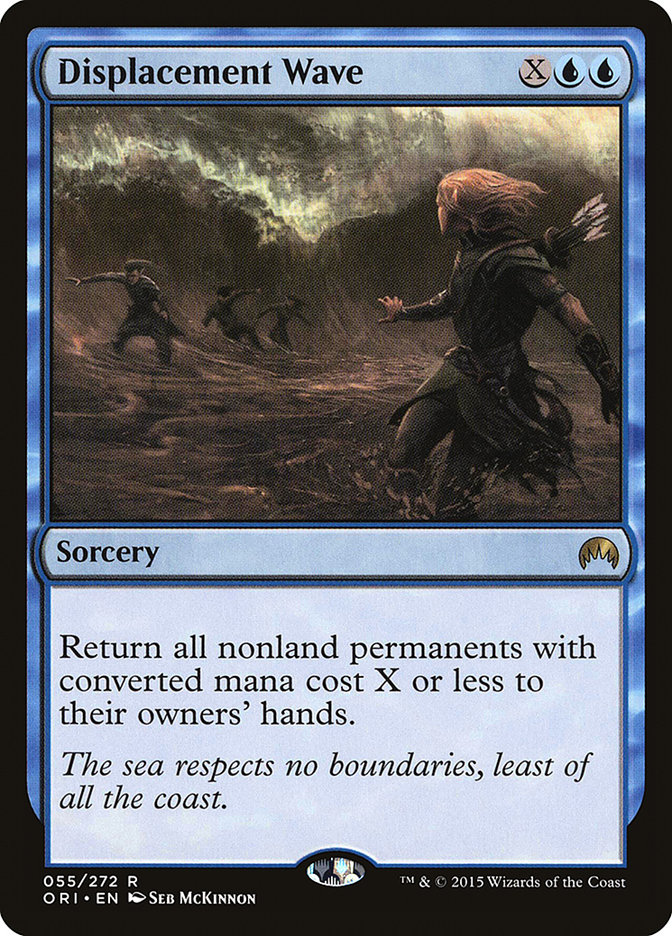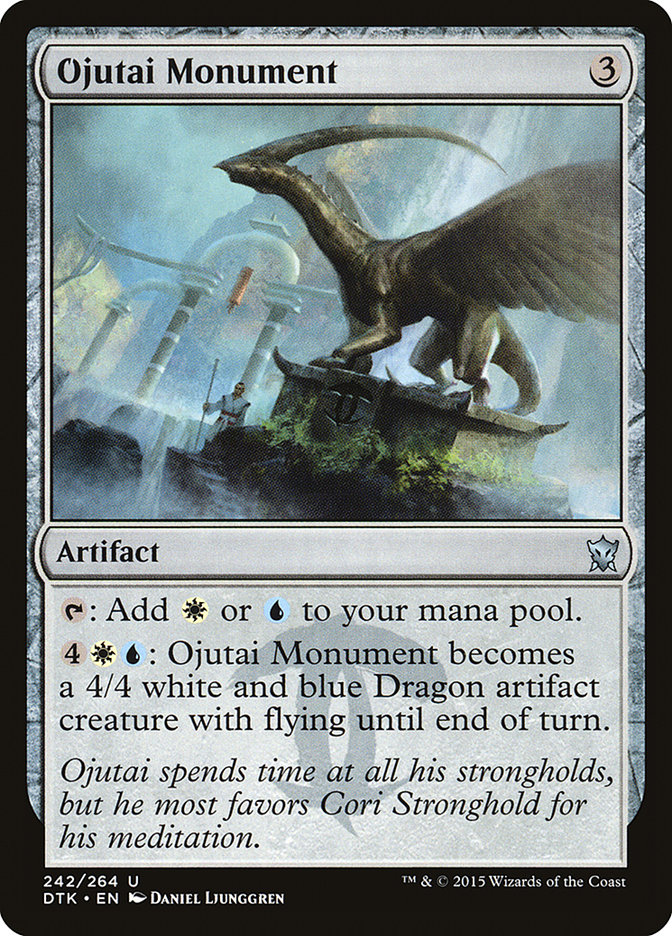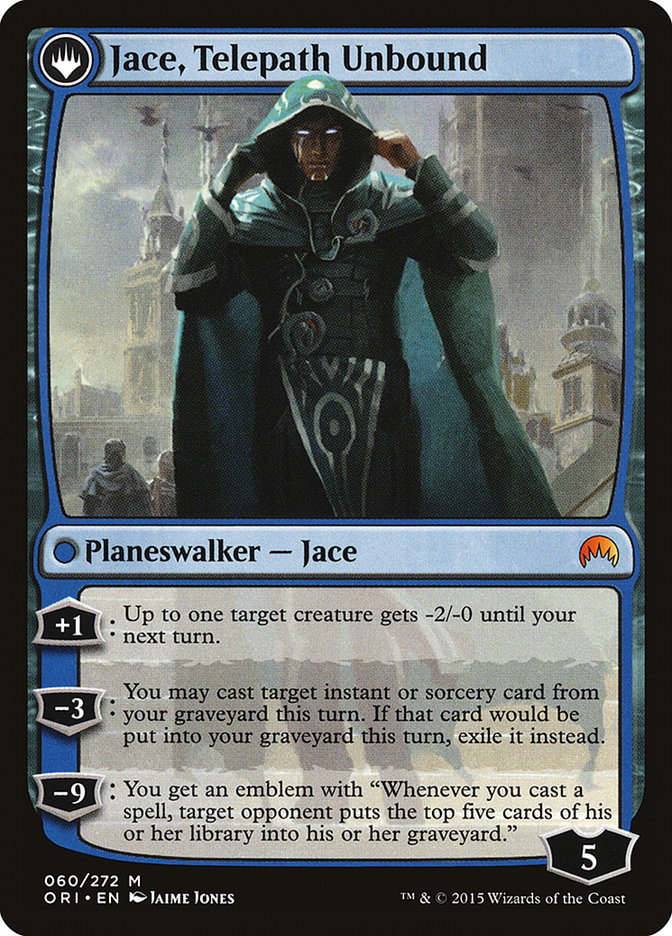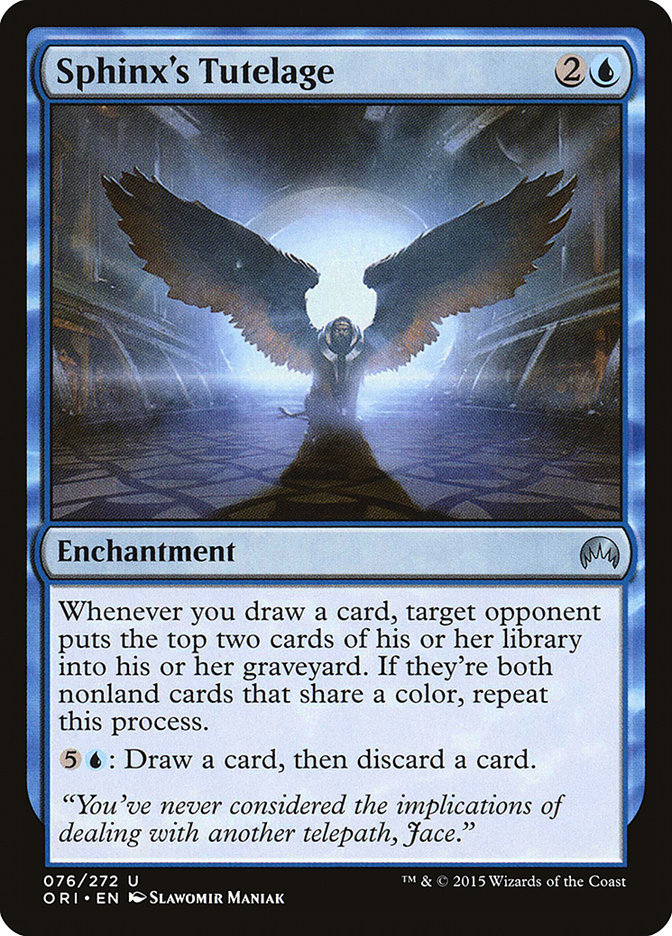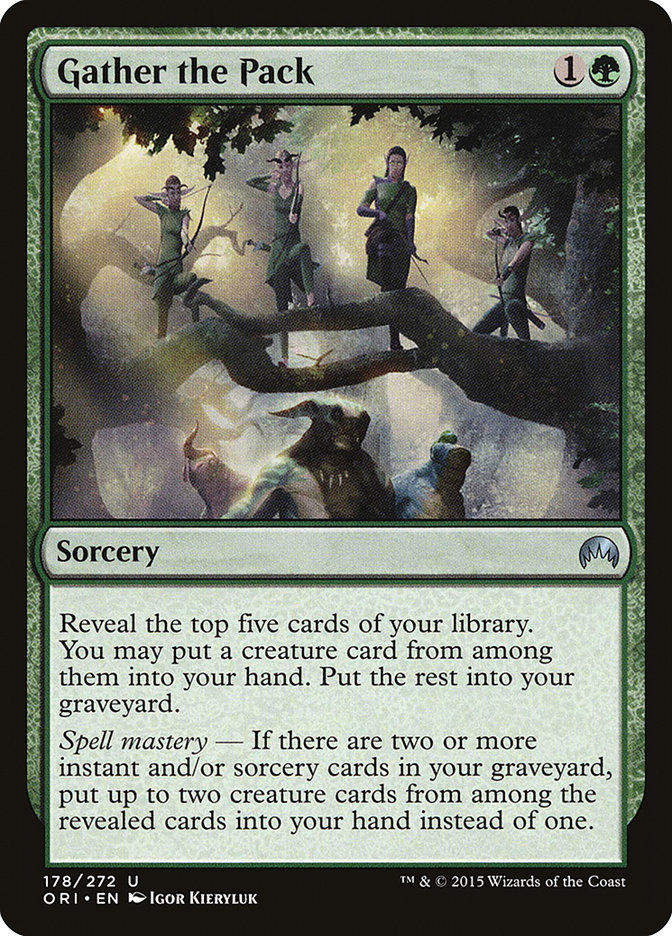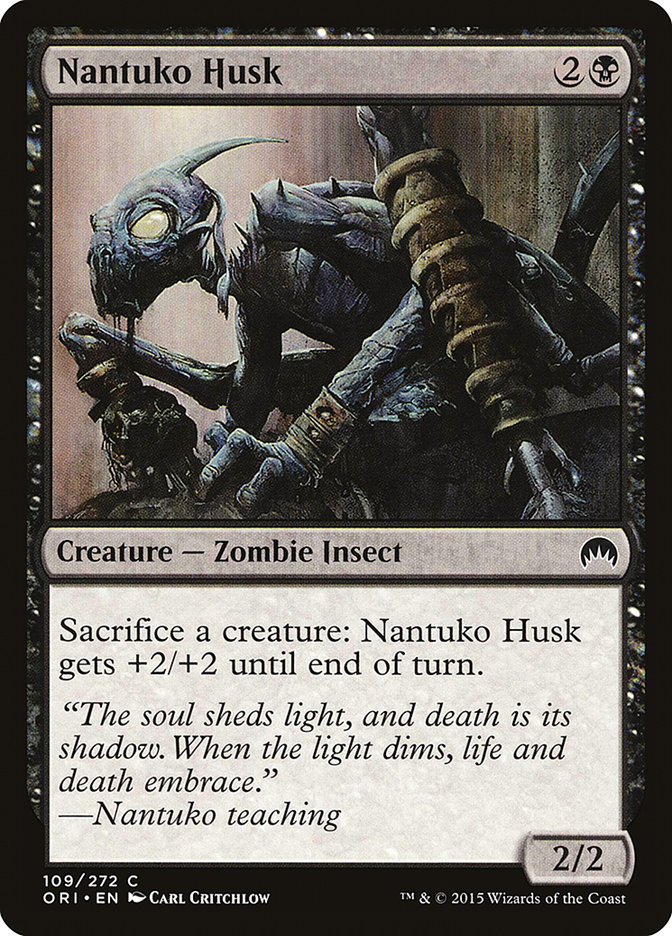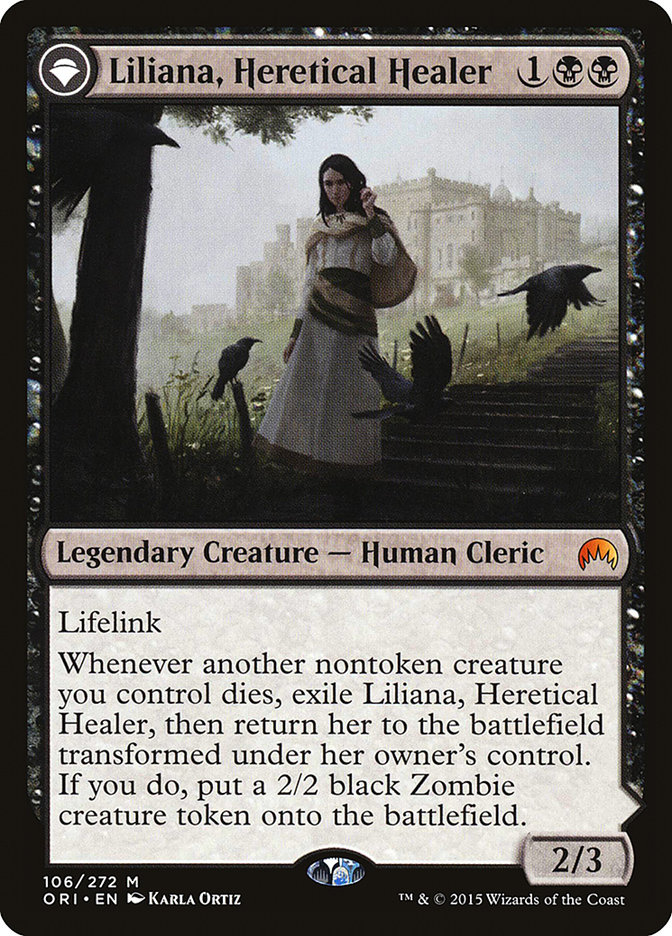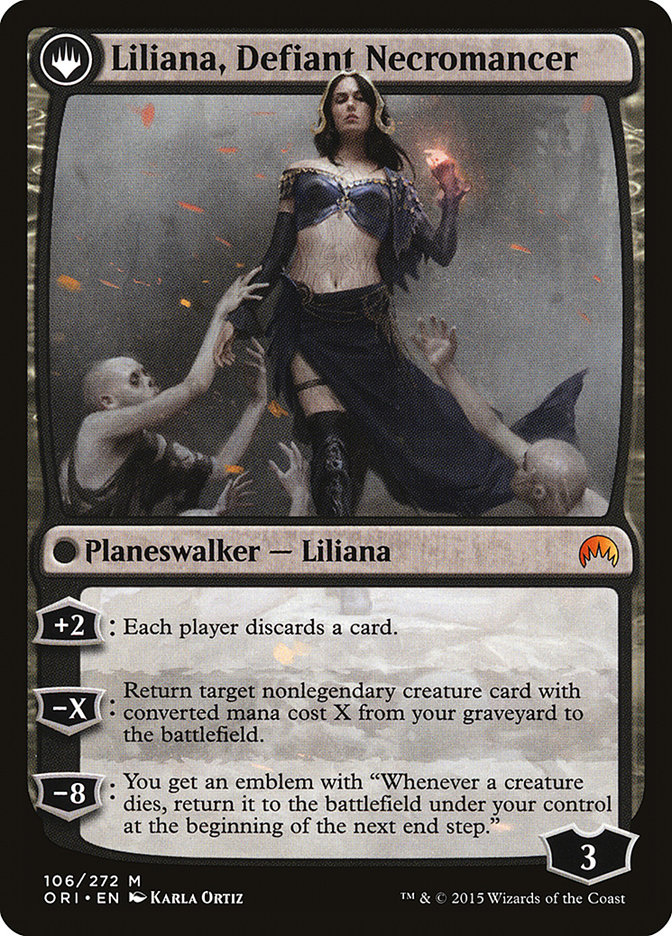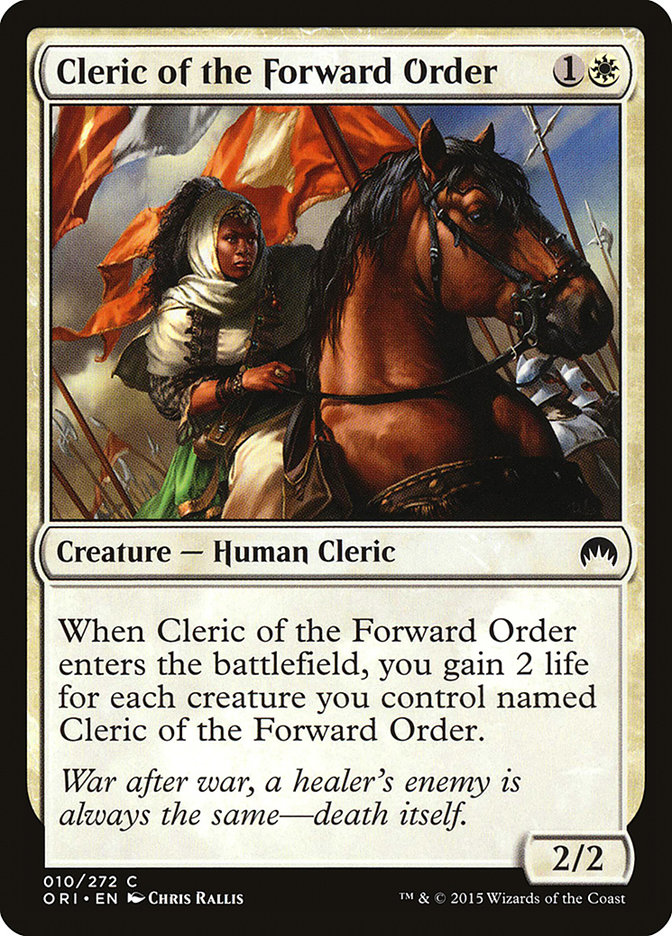This past weekend’s SCG Open in Chicago marks the beginning of Magic Origins Standard. I never put too much stock in Day One results, as the first day a new set is legal tends to be largely just a bunch of people playing whatever decks they were playing at the end of the last format. Still, it is a useful jumping-off point, giving us an idea of what the first decks to beat are.
Let’s start with a look at the Day Two metagame of SCG Chicago, then we’ll take a look at some of the best decks to emerge from this weekend.
SCG Chicago Day Two
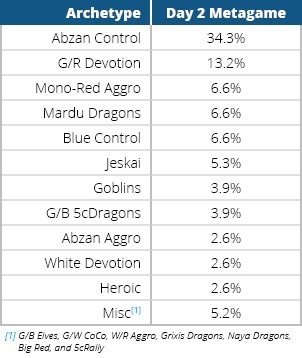
Without question, Abzan Control is the deck to beat. This chart merges “Abzan Control” and “Abzan Megamorph,” since they are actually the same deck, but even if you split them up they would still be the first and third most popular decks (with non-Megamorph being more popular than Megamorph).
While there are a lot of powerful cards in Magic Origins, it is interesting how much they seem to make Siege Rhino better.
As we start testing new brews, there’s no question: the first deck in the gauntlet is definitely Abzan. I would use Den Protectors, regardless, but whether or not you want to include Deathmist Raptor might be a function of whether or not you expect Deathmist Raptor to be good against you.
The highest-finishing Abzan deck on the weekend was Bruce Edelman, piloting the following list:
Creatures (15)
Planeswalkers (3)
Lands (26)
Spells (16)

There are tons of experiments to try in Abzan, but I like a lot of the things going on here and this seems like a great starting point. It maintains most of the core, proven Abzan strategy while also making great use of a few Magic Origins cards.
I like Languish as a maindeck card, as it does most of what Drown in Sorrow and End Hostilities do. After sideboarding, we can add more of the narrower effect that we actually want. Languish does kill your Coursers, but End Hostilities would have as well. I love that it kills Dragonlord Ojutai without killing your Siege Rhino. We could have used Crux of Fate, but Crux of Fate has many of the same weaknesses against Dragonlord Atarka that Languish has.
That Languish lets your Siege Rhinos survive is very sexy, so it’s not surprising to see a return to playing Tasigur. We’ll love him against all these Stoke the Flames and Exquisite Firecrafts anyway.
Nissa, Vastwood Seer is more than just another Civic Wayfinder, and I kind of suspect that she’s worth warping our deck more for. Early on, she’s a solid two-for-one and more than a speed bump. Later, she is a three-cost planeswalker that affects the game like a five-cost planeswalker while also drawing an extra card when played. It’s also awesome that you can just play her early for the land; later, unmorph a Den Protector and get her back, get another land and Transform!
Now, you can play Nissa on turn seven, find a seventh land, flip her and make a 4/4. For three mana, we just got a land, a 4/4, and a planeswalker that draws a card every turn! We even get to make another big play that turn with the rest of our mana!
Making room for enough Forests to support Nissa has scared some players off, but you really don’t need that many. Bruce has just four despite playing three copies of Nissa and four Windswept Heaths. After all, even if you have searched out all of your Forests and you draw another Nissa, she’s still a “planeswalker.”
The more interesting decision is the use of just a single Plains. Maybe you just don’t rely on Windswept Heath to cast Elspeth (which means two Heaths can’t cast her). However, I would still want the second Plains to give more ways for our Heaths to be live later.
While Abzan may have been the biggest deck on Day Two, it was definitely G/R Devotion that dominated the Top Eight, including putting three copies into the Top Four. Here’s the winner’s list:
Creatures (31)
- 1 Hornet Queen
- 4 Elvish Mystic
- 4 Polukranos, World Eater
- 4 Sylvan Caryatid
- 4 Courser of Kruphix
- 2 Genesis Hydra
- 4 Rattleclaw Mystic
- 1 Ashcloud Phoenix
- 4 Whisperwood Elemental
- 3 Dragonlord Atarka
Planeswalkers (4)
Lands (24)
Spells (1)

The biggest addition to Tuan’s list is the use of a full playset of Gaea’s Revenge in the sideboard.
Tuan loved the Gaea’s Revenge approach so much, he actually played two Mistcutter Hydras as Revenges number five and six. They are giant uncounterable threats that specialize in dismantling control decks. Just remember to play around Foul-Tongued Invocation by playing a mana accelerant first if possible. Additionally, beware of Abzan Charm and Sultai Charm, though you’re usually not boarding Gaea’s Revenge against green decks anyway.
Sword of the Animist is a cute one-of that allows all of your Elvish Mystics, Rattleclaw Mystics, and Coursers to be serious threats, helping ramp you up to your bombs faster. It’s also sweet that it gives you a free reshuffle each turn for your Coursers.
Ross Merriam, who also finished in the Top Four, has a fairly similar build, but his makes use of two copies of Nissa instead of Sword of the Animist or Ashcloud Phoenix:
Creatures (33)
- 1 Hornet Queen
- 4 Elvish Mystic
- 4 Polukranos, World Eater
- 4 Sylvan Caryatid
- 4 Courser of Kruphix
- 3 Genesis Hydra
- 4 Rattleclaw Mystic
- 4 Whisperwood Elemental
- 3 Dragonlord Atarka
- 2 Nissa, Vastwood Seer
Planeswalkers (3)
Lands (24)

The coolest deck in the Top Eight has got to be Jeff Hoogland innovative U/W Control deck. While there were a couple of Esper Dragons and a couple of Sultai Control decks in Day Two of the event, Hoogland went in a very new direction for control, capitalizing on the strength of Thopter Spy Network:
Creatures (4)
Planeswalkers (4)
Lands (27)
Spells (25)

While Hoogland’s deck plays a fairly classic U/W Control game in many regards, it is very obviously built around Thopter Spy Network and Hangarback Walker.
Thopter Spy Network asks you to play an above-average number of artifacts, but if you do, it’s a combination of a pain-free Bitterblossom and a Bident of Thassa. Once you get the whole thing running, you are effectively drawing two extra cards a turn – one from the attack trigger, and one in the form of a 1/1 flying Thopter.
Even if you don’t get the extra card most turns due to opponents killing the Thopters or whatever, you are still getting another flier every turn without having to spend mana or life. It’s a great way to generate an advantage which you can leverage into a win while dodging most traditional removal spells.
While the most obvious combo is Darksteel Citadel, ensuring opponents can’t turn off your Network, it’s also sweet with Hangarback Walker. If Hangarback Walker is allowed to run rampant, it can grow to a massive threat. As a result, opponents are often going to kill it when it is small, usually leaving you with one Thopter. Drop the Spy Network and attack with the Thopter to draw a card “with haste.”
Hangarback Walker is just a great card. It makes a great blocker early, it’s resilient to removal, and it can really punish people that don’t use removal on it. Remember, you can use the tap ability during your opponent’s end step, making the Walker an excellent creature to hang back and block with.
Artificer’s Epiphany is a real Hoogland style of card, an exotic alternative for a very straightforward effect. It’s not different for the sake of being different, though. It has some slightly different advantages and disadvantages to the banal alternatives (in this case Anticipate and Divination).
Isn’t this just a worse Thirst for Knowledge?
Yes, it’s quite a bit worse than Thirst for Knowledge. No question. That card’s also restricted in Vintage.
Hoogland’s deck has four Walkers and three Darksteel Citadels, which means he’s about a two-to-one favorite to have his Epiphany already powered up on turn three. Even when it’s not, you can often wait a bit before casting it; however, when you can’t wait, it’s not like drawing two and discarding one is the worse failure mode. That’s literally one of the modes of Sultai Charm. Yes, it’s Catalog, but that’s another card that costs the same amount, and this card is better than that two thirds of the time.
Or, you could use Divination and get more cards than Catalog 100% of the time.
The instant speed of Artificer’s Epiphany is a big deal! You can hold up Dissolve, Clash of Wills, or any of your various white removal spells. Then, if you have an opening, end step the Epiphany. Anticipate does the same thing, but it doesn’t actually give us the raw card advantage Epiphany does.
Clash of Wills and Swift Reckoning aren’t flashy, but these quiet role-players might be the two biggest reasons for some form of U/W Control to replace U/B Control. U/W Control decks have long had a weakness at the two-spot on their curve while U/B has had access to things like Bile Blight and Ultimate Price.
Silumgar’s Scorn has been a popular two-mana play, but without black mana it’s hard to get enough Dragons to justify it. Yeah, we could just play four copies of Dragonlord Ojutai, but then we’re still going to miss on having a Dragon a fair bit. We could add Icefall Regent, but that’s not exactly what we’re actually looking for. We could splash Dragons off Haven of the Spirit Dragon and such, but this list needs Darksteel Citadel in those slots.
Besides, the biggest thing is that playing enough Dragonlord Ojutais to support Silumgar’s Scorn is a lot of slots for “victory conditions.” When we really want Elspeth and Ugin there instead, Silumgar’s Scorn starts losing its appeal. Hangarback Walker and Thopter Spy Network means we’re already long on victory conditions.
Blue has had Negate and Nullify, but it can be risky to play too many of either. Besides, both can get a fair bit worse on the draw. Clash of Wills isn’t breaking any power-level records, but having some turn-two counters that are still reliable later on is nice.
White has had Valorous Stance and Last Breath, but Last Breath is kind of weak and narrow while Valorous Stance is kind of like Disdainful Stroke in that it’s not really a two-drop. Swift Reckoning can be played turn two against one-drops like Warden of the First Tree or Foundry Street Denizen, but it’s also fine later.
Celestial Flare is another fine option in Magic Origins that can be used early or late. It’s got the nice advantage of being able to kill Stormbreath Dragon or Thunderbreak Regent without taking damage. However, the card has a real weakness to token-makers and cards like Satyr Wayfinder. It’s also not really an option in Hoogland’s deck since he has so many colorless lands and wants to play enough blue mana to support a reliable turn-three Dissolve.
Displacement Wave is a great anti-token card, sweeping all of them away for just two mana. It also doesn’t cost that much more if you want to send a few other random creatures back as well. Going long, it gives you some nice options for getting hard-to-answer permanents off the table, like Jeskai Ascendancy.
While Hoogland’s list doesn’t feature Ojutai Monument, it might be worth considering. It’s not just a turn-three play, and in fact, I would guess it’s more commonly a turn four or five play in order to let you also keep up mana for whatever other play you wanted to make. It gives you another way to power up your Network, and going long it’s a passable threat that lives through both End Hostilities and Ugin.
Hoogland’s deck may look gimmicky, but it is built on a solid foundation of efficient interaction, card advantage, and power cards (Elspeth, Ugin, Dig Through Time, and maybe Thopter Spy Network?!?). I’m not sure if it will become the industry standard for control decks, but it is definitely one to experiment with and build upon. It makes excellent use of many new cards, and a variety of other decks might be able to learn lessons from it.
Jeskai Tokens mostly died out last season from a combination of splash damage from people trying to beat Mono-Red and from other decks just becoming more powerful than it. With Magic Origins, the archetype has had new life breathed into it thanks to Jace, Vryn’s Prodigy.
Jace gives us a lot of the Jeskai Ascendancy experience, drawing and discarding cards, and then he becomes a legitimate source of card advantage when he flips. Flashing back Treasure Cruise is awesome, but even just getting an extra burn spell or Hordeling Outburst can be a boon.
While he may have a target on his forehead, he also makes Ojutai’s Command into a stronger card. You can play it on your opponent’s end step, get back Jace and draw a card, then untap and flip Jace, flashing back your Ojutai’s Command to draw another card and get back another Jace (or Seeker of the Way).
As if this wasn’t enough, he also occasionally forms a sweet combo with Jeskai Ascendancy. Each spell you cast lets you untap Jace again, give you even more loots. This won’t last long, as Jace will flip quickly, but Treasure Cruise can sometimes keep things going longer. All of the looting makes Treasure Cruise extra cheap, and all the extra cards it gives you make the Looting even better.
Creatures (8)
Lands (24)
Spells (28)
- 3 Raise the Alarm
- 1 Dragon Fodder
- 2 Lightning Strike
- 4 Stoke the Flames
- 4 Treasure Cruise
- 4 Hordeling Outburst
- 4 Jeskai Ascendancy
- 3 Wild Slash
- 2 Ojutai's Command
- 1 Secure the Wastes
Sideboard

Kevin’s list also features a deadly new sideboard card that appears to be quickly gaining popularity.
Sphinx’s Tutelage is a devastating threat against control that can be very difficult for them to remove. It’s not just a zero-mana Grindstone, it’s also one that triggers every time you use Jace or Jeskai Ascendancy and three times from Treasure Cruise. If you have nothing else going on, it lets you dig for more action while also accelerating your mill-kill.
Kevin’s Ascendancy deck may have been the highest-finishing Jace deck in the event, but I think the most stylish has got to be Matthew Tickal’s 5-Color Rally the Ancestors deck.
Creatures (30)
- 4 Nantuko Husk
- 4 Elvish Mystic
- 3 Sylvan Caryatid
- 2 Mogis's Marauder
- 4 Satyr Wayfinder
- 3 Grim Haruspex
- 2 Den Protector
- 3 Deathmist Raptor
- 1 Liliana, Heretical Healer
- 4 Jace, Vryn's Prodigy
Lands (20)
Spells (10)

This deck is super hot!
Cards like Gather the Pack, Satyr Wayfinder, and Jace, Vryn’s Prodigy fill your graveyard so that when you Rally the Ancestors, you generate an overwhelming board advantage.
Gather the Pack is a strictly-better Commune with the Gods since we have no enchantments. But in this deck it’s just so much better, as this is a deck that really appreciates the extra card draw in some attrition matchups, such as against Abzan.
Having just nine other sorceries and instants to trigger the Spell Mastery may seem like it is too few, but remember: the first Gather we cast is nearly 60% to add a second sorcery or instant, in addition to itself. That means the second Gather is a draw-two with selection attached to it.
How often are we really drawing two off Gather the Pack, though?
Well, with thirty creatures in our deck we’re going to reveal two or more 83% of the time, which is pretty darn good.
Nantuko Husk is a fantastic addition to this strategy, giving you a zero-mana way to kill all of your creatures to Rally back. With Grim Haruspex, you get to draw a ton of cards – even if they somehow don’t die outright from Mogis’s Marauders, you’ll may have drawn so many cards that they can’t come back.
Nantuko Husk also keeps your Deathmist Raptors from getting Abzan Charmed or hit by Anger of the Gods. The zero-mana sacrifice ability can also be used to flip Liliana at will.
Liliana doesn’t play a major role in this deck, but is kind of just another way to get value from the engine. A single copy can be super-sweet with Chord of Calling, particularly if we surprise block a small creature with it, gain some life, and then flip her from another blocker dying.
I think Arashin Cleric may be better than Cleric of the Forward Order, in general, but with this much self-mill in the deck, we have better-than-average chances of gaining four or more life. With the recent surge of red decks thanks to Abbot of Keral Keep, Exquisite Firecraft, and Goblin Piledriver, this seems like a good use of sideboard slots at the moment.
We are only just scratching the surface of what Magic Origins brings to the table, but already the impact of cards like Nissa, Jace, Thopter Spy Network, Hangarback Walker, and Languish is being felt. Even just role-players like Clash of Wills and Sword of the Animist are changing the texture of the format in ways that will have cascading impacts on card choices.
While Magic Origins has plenty of nuts-and-bolts cards like Swift Reckoning and Exquisite Firecraft, it also has tons of build-around-me cards that have the potential to catch the format from an unexpected angle, like Thopter Spy Network did this week, or perhaps change basic assumptions about the format like Blue Devotion did a year and a half ago.
Starfield of Nyx? Day’s Undoing? Demonic Pact? Flameshadow Conjuring? Evolutionary Leap?
What’s next?

